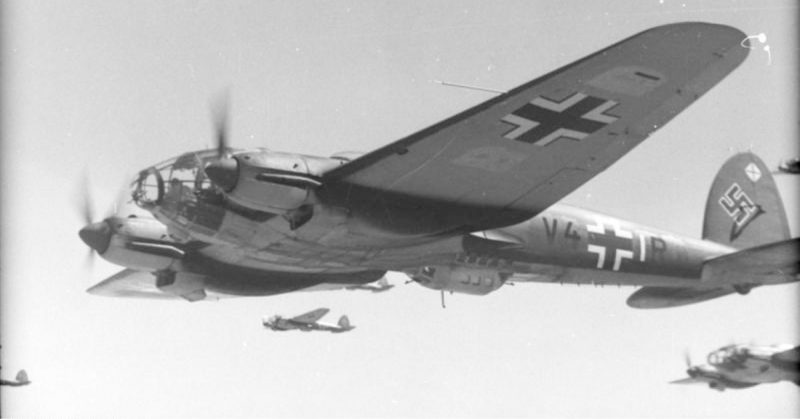The Ace Fighter cult came to prominence during the First World War, which was the first conflict that utilized the use of aircraft in a larger scale. The notorious Red Baron, Manfred von Richthofen was one of the first to establish the “ace” tradition within the German Air Force. He was dubbed the ace-of-aces with 80 credited aerial victories.
Prior to WWII, Luftwaffe underwent serious changes, disobeying the terms of the Treaty of Versailles that forbade Germany to develop an air force. Hermann Goering ignored the agreement and started to build up for a future war in the 1930’s.
The German air armada produced 119,871 airplanes in a period between 1939 and 1945. The pilots who manned those planes were respected and popular in the Third Reich and the stories of their victories were often part of the Nazi propaganda campaign. The Luftwaffe operated with 3,400,000 personnel throughout the war.
German day and night fighter pilots claimed roughly 70,000 aerial victories during World War II, 25,000 over British or American and 45,000 over Russian flown aircraft. Their losses, on the other hand, were high as well ― approximately 14,800 day and night pilots lost their life and 6,900 were wounded in action. The Luftwaffe had 103 pilots who shot down over 100 airplanes. Note that a fighter ace needs to shoot down five or more enemy aircraft to earn his title.
10. Theodor Weissenberger – 208 kills
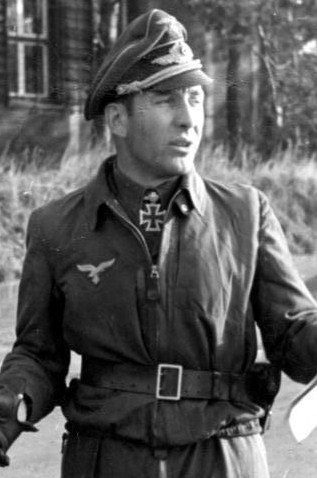
Weissenberger’s military career began in 1936, when he volunteered in the Luftwaffe, after gaining experience as a civilian glider pilot. He was attached to the heavy fighter squadron Jagdgeschwader 77 in 1941, just after finishing his training. Weissenberger claimed his first victory on the skies over Norway against the RAF on October 24, 1941.
From that point on he carried out 23 more aerial victories and received the German Cross in Gold. In 1942, he was transferred to another unit, Jagdgeschwader 5, where he received an another prestigious medal ― the Knight’s Cross of the Iron Cross, after achieving 38 kills.
Later, in November 1944, he took additional training to master the Me 262 jet fighter, thus becoming the commander of the first operational jet fighter unit in the world. During this period, he was credited with 8 more victories when he downed seven B-17 bombers and P-51 fighter aircraft.
He survived the war as a Me 262 fighter pilot with 208 certified aerial victories and 33 more possible, in total, in his 375 combat missions. He died in a car crash during a racing incident on June 11th, 1950 in Nurburgring.
9. Heinrich Ehrler – 208 kills
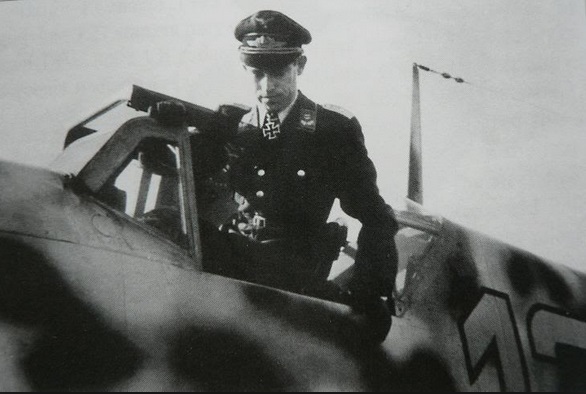
Ehrler spent most of his wartime experience on the Eastern Front, where he claimed the majority of his victories. Nine more victories were attributed to him on the Western Front, eight of which were achieved flying the Me 262 jet fighter. He joined the Wehrmacht in 1935 and served as an anti-aircraft gunner in the Condor Legion during the Spanish Civil War.
In 1944, his name was slurred as he was used as a scapegoat after the disastrous sinking of a Bismarck-class battleship, the Tirpitz, during an RAF bombing raid. He was put to house-arrest. At that time he was nominated for the Knights Cross of the Iron Cross with Oak Leaves and Swords, but, because of the incident, was never awarded it. He was court-martialled, stripped of command over his fighter unit and put under house arrest.
The High Command later called him to fill in the ranks, for the war was rapidly approaching its end. His fellow pilots reported that Ehrler took the job with apathy as the once glorious triumphs of the Luftwaffe deteriorated to suicide missions by the end of the war.
He himself ended his life by ramming into an American bomber. Ehrler’s last radio transmission was: “Theo, I have run out of ammunition. I’m going to ram this one. Good bye. We’ll see each other in Valhalla.” “Theo” refers to Theodor Weissenberger, the number ten on our list.
8. Hemann Graf – 212 kills
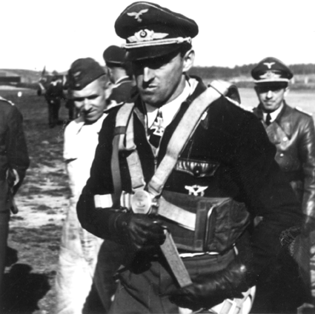
Hermann Graf was, like many others, achieved his ace status in the bloody air battles above the Soviet Union. There he claimed 202 victories, becoming the first pilot in history to gain such score. Prior to the war, Graf was a football player and a glider pilot-enthusiast. He joined the Luftwaffe in 1935, where he was initially selected for transport aviation, but transferred to Jagdgeschwader 51 in 1939.
Just before the war, he was stationed on the Franco-German border where he did patrol duty. He also served as a flight instructor in Romania, where he provided training for Romanian pilots. During the occupation of Crete, he supported the ground forces in the final stages of invasion. Graf flew 830 combat missions and won 10 more aerial victories on the Western Front, which includes six four-engine bombers and one Mosquito.
After the war, he was captured by the Americans but handed over to the Soviets. He survived the Soviet POW camps and returned to Germany. Hermann Graf died in 1988, in his hometown, Engen.
7. Heinrich Bär – 220 kills

Bär fought on all major German theaters of war ― he flew missions on the Mediterranean, Eastern and Western fronts with a total score of more than a thousand flights. He was shot down 18 times and was wounded three times and survived. Bär claimed 220 or 221 aerial victories, 16 of which were achieved while flying the Me 262 jet fighter, which was, at that time, fairly difficult to man.
Bär was a Saxon, proud of his thick accent, who joined the Reichswehr in 1934 and transferred to Luftwaffe in 1935. Initially serving as a mechanic, he gradually managed to pilot a transport aircraft, while informally training for a fighter plane. He achieved his first aerial victory on the French border in a skirmish in September 1939.
From that moment on, he went to become one of the leading aces of the Luftwaffe. During the Battle of Britain, his score reached 17. When the invasion of the Soviet Union started, Bär he transferred to the Eastern Front, where he accumulated further kills. In February 1942, Bär was awarded the Knight’s Cross of the Iron Cross with Oak Leaves and Swords. During the last years of the war, Bär also flew in the Me 262 jet fighter, claiming 17 victories.
At the end of the war on May 4, 1945, Bär ordered his pilots to surrender, after destroying their Me 262 jets. This decision wasn’t taken lightly by his commanding officers and he was almost shot for insubordination. He avoided the firing squad, surrendered and survived the war.
Wikipedia / Bundesarchiv CC-BY-SA 3.0
6. Erich Rudorffer – 222 kills
![Prop.-Kp. Wm Kb. Abt. Luftwaffe, Film-Nr. L419/22 Bildberichter: Stachelscheid Ort: Libau, Datum: 22.12.44 Neues Bild des Eichenlaubträgers Major Rudorffer, Kommandeur einer Jagdgruppe in Kurland. [Scherl Bilderdienst]](https://www.warhistoryonline.com/wp-content/uploads/sites/64/2016/04/rudorfer-427x640.jpg)
He holds the seventh place on an internationally recognized list of best pilots in the history of aerial warfare. More than 300 of his flights included combat. In the Eastern Front, he claimed 58 victories over the feared armored IL-2 Sturmovik ground attack aircraft. On one occasion, in 1941, he claimed that he had sunk a British submarine near the Isle of Portland, but the Royal Navy claimed otherwise. The Luftwaffe gave him credit only for damaging the submarine.
Erich Rudorffer is the last living recipient of the Knight’s Cross of the Iron Cross with Oak Leaves and Swords. The award was given during WWII for extreme bravery on the battlefield or for outstanding military leadership.
5. Wilhelm “Willie” Batz – 237 kills
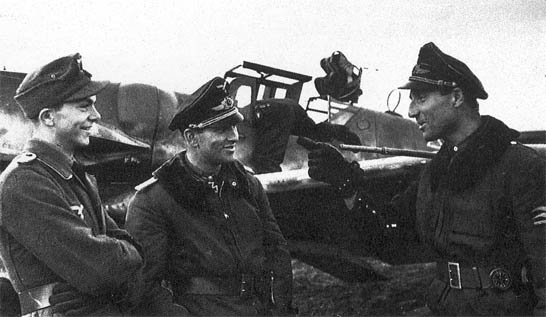
Willie Batz flew 445 combat missions. More than a half of them were his aerial victories. The vast majority (234) of his victories were achieved on the Eastern Front, where he battled Sturmoviks and four-engine bombers on the regular basis. An interesting fact is that Batz was rejected several times for combat assignments in the early stages of the war, as he served as a flight instructor at fighter pilot schools in Kaufbeuren and Bad Aibling.
When the US bombers started raids on Romania’s Ploesti oil fields, Batz fought them off, downing three American bombers. In March 1944, he received the famous Knight’s Cross of the Iron Cross with Oak Leaves and Swords for his service. In 1945, he was stationed in Hungary. He managed to extract his men back to Germany where they surrendered to the Allies, avoiding Soviet imprisonment, of which many Germans feared.Otto Kittel – 267 kills.
4. Otto Kittel – 267 kills
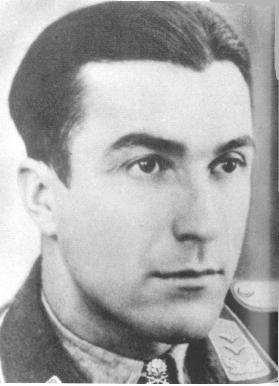
The man who opened the hunting season on the Eastern Front was Otto Kittel, who earned his first aerial victory on the first day of Operation Barbarossa. In total, he flew 583 combat missions with a score of 267 victories. His tally was fairly modest during his use of the Messerschmitt Bf 109.
By 1943, his count was 39, which is relatively insignificant in comparison to the other aces at that time. When he acquired the Focke-Wulf Fw190 fighter plane, the number of his aerial victories tripled before the end of the same year. He received both Knight’s Cross of the Iron Cross and the Knight’s Cross of the Iron Cross with Oak Leaves and Swords. Kittel became famous for battling the armored Sturmoviks and earned himself the nickname “Butcher Killer” since “Butcher” was the unofficial name for the Sturmovik, an airplane that caused many troubles for the Wehrmacht.
During one of his missions, Kittel was forced to land 80 km behind enemy lines. He managed to avoid detection disguised as a Russian peasant. Kittel was familiar with the Russian language and spoke Czech very well in addition. He passed several checkpoints and even received food from other peasants who couldn’t see through his disguise. Three days later, he reached the German lines. After a short leave, he was back in the cockpit.
Otto Kittel was the highest-rated German fighter ace that died in combat, after being shot down by a Sturmovik gunner in February 1945.
3. Gunther Rall – 275 kills
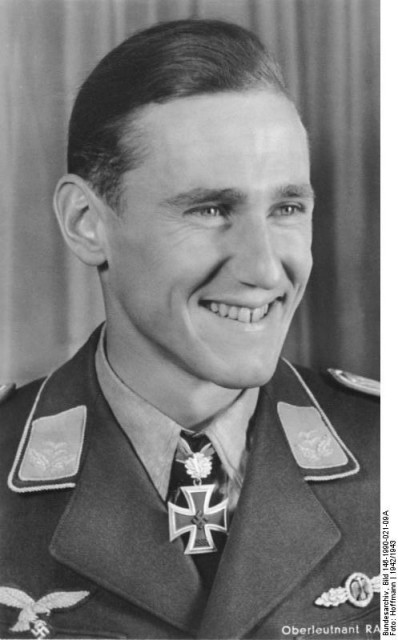
Gunther Rall became famous on the Eastern Front, where he often engaged in dogfights with Soviet fighter planes. He flew 621 combat missions and earned 275 aerial victories in total. On the Eastern Front alone, he achieved 272 of them and 241 were against other fighter planes.
He first saw action during the Battle of France in May 1940, when he successfully defended a reconnaissance plane from three French P-36 Hawk fighter planes. He managed to down one of them. Soon after he was on the Eastern Front where he scored victories on a daily basis. Rall was shot down eight times and wounded three times.
After one of his crash-landing, he was hospitalized and the doctors concluded that his back was broken in three places. He was sent to a hospital in Vienna and was told that he could never recover enough to fly again. Gunther Rall proved them wrong and he was back in the saddle, just a year after the accident. In 1942, he received his Knight’s Cross of the Iron Cross medal, to which were later added the Oak Leaves and Swords. He was presented with the award by Adolf Hitler himself.
In April 1944, Rall was called back to participate in the Defense of the Reich against the Allied bombers. On one of his flights, he was once again shot down. Rall suffered minor injuries which included his left thumb being shot off. Due to infections, he was forced to step down from combat mission for a while. During this time, Rall studied the American planes that the Germans managed to capture.
He was impressed with the luxury and performance by the enemy planes. Rall used his research to improve the tactics of his own pilots. After the war, Gunther Rall managed to find a job in the newly-established West German Army. He later became a General-Lieutenant and a military attaché in the NATO forces.
2. Gerhard “Gerd” Barkhorn – 301 kills
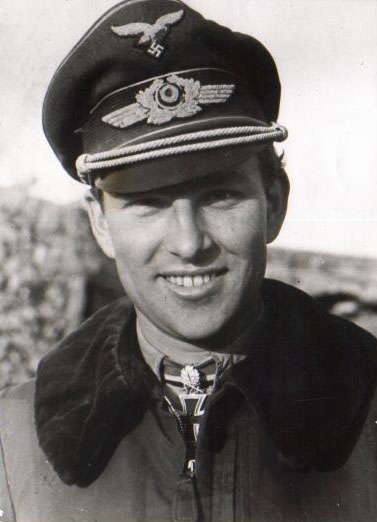
The number two on our list was a pilot who flew 120 combat missions all over Europe, before finally shooting down an enemy plane. After he found his “shooting eye”, as he himself called it, his tally began to constantly rise. Gerd flew with the famed Jagdgeschwader 52 squadron on the Eastern Front where he scored the majority of his aerial victories and a price was put on his head by the Red Army.
He was responsible for the death of Nikolay Klepikov, the Hero of the Soviet Union and a Soviet fighter ace. Barkhorn’s awards include, of course, the Knight’s Cross of the Iron Cross, later adding the Oaks and Swords. Despite being the second most successful ace in the history of aviation, he was not awarded Diamonds in addition to his Knight’s Cross, after reaching his 300th kill.
After being shot down several times, Barkhorn developed anxiety and combat stress which became especially apparent during his missions in defense of the Reich. In the last year of the war, he was surrounded by inexperienced pilots who were dropping like flies against the battle-hardened Allied crews. His mental instability increased and he was hospitalized.
After a short leave, he returned as a pilot of the Me 262 jet fighter but didn’t score any victories with the new plane, which he considered too hard to control. Gerd Barkhorn died together with his wife in 1983, after a fatal car accident.
1. Erich “Bubi” Hartmann – 352
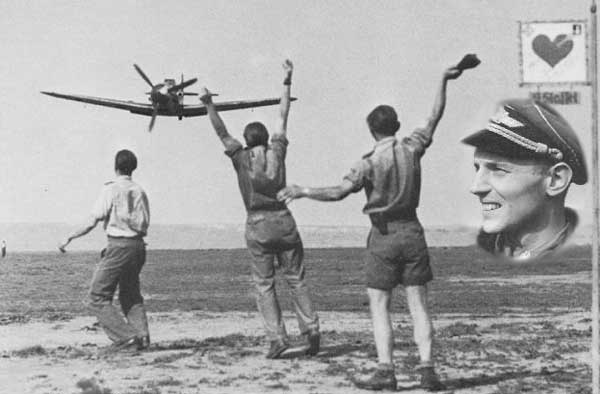
The Germans called him Bubi, but the Soviets called him the Black Devil. He was the highest scoring pilot fighter ace in the history of aerial warfare. He was only 20 years old, when he engaged in combat, in 1942, immediately becoming one of the best. Hartmann downed 345 Soviet aircraft and 7 American. He was loved and respected among his fellow-Luftwaffe pilots and Gerhard Barkhorn even served as best man on Hartmann’s wedding.
Hartmann was awarded the Knight’s Cross of the Iron Cross with Oak Leaves and Swords and Diamonds for his immaculate record. Of all of his accomplishments, the one that he was most proud of was the fact that he had never lost a wingman.
This, fairly, is something to be proud of, but history buffs couldn’t let it slide ― he did lose one of his wingman in 1943. His name was Major Gunther Capito. Other than being a pilot, he was also a great tactician. In his own words, we offer you a glimpse inside the mind of the greatest fighter pilot that ever lived:
“Once committed to an attack, fly in at full speed. After scoring crippling or disabling hits, I would clear myself and then repeat the process. I never pursued the enemy once they had eluded me. Better to break off and set up again for a new assault. I always began my attacks from full strength, if possible, my ideal flying height being 22,000 ft because at that altitude I could best utilize the performance of my aircraft. Combat flying is based on the slashing attack and rough maneuvering. In combat flying, fancy precision aerobatic work is really not of much use. Instead, it is the rough maneuver which succeeds.”
In his later years, after his military career had ended, he became a civilian flight instructor. He died of natural causes on 20 September 1993.
